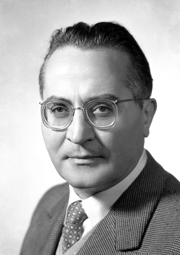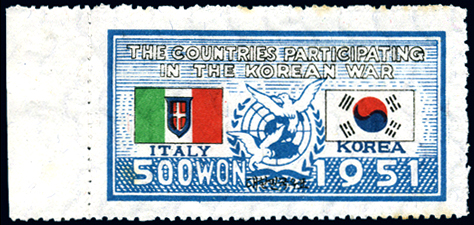|
Maria Pia Garavaglia
Mariapia Garavaglia (born 10 August 1947 in Cuggiono) is an Italian politician and professor, former Italian Minister of Health during the Carlo Azeglio Ciampi government and former Deputy Mayor of Rome. She has been member of the Christian Democracy, of the Italian People's Party, of The Daisy and finally of the Democratic Party. She was extraordinary commissioner and later President of Italian Red Cross. She is also director for international programs of the Italy-USA Foundation. Biography Graduated in Literature and Political Sciences at the Catholic University of the Sacred Heart of Milan, she has always dedicated herself to teaching and voluntary activities in the health and social sector. She was a teacher of Letters at high schools. She is a contract professor at the Faculty of Psychology of the Sapienza University of Rome. In the academic years 1996-2007 she held seminars at the Bioengineering Department of the Polytechnic University of Milan. She carries out tr ... [...More Info...] [...Related Items...] OR: [Wikipedia] [Google] [Baidu] |
Italian Minister Of Health
The Minister of Health (Italian: ''Ministro della Salute'') in Italy is one of the positions in the Italian government. The ministry was officially established in 1958, with Vincenzo Monaldi, of the Christian Democracy, serving as the first minister. From 1946 to 1958, the position was held by a High Commissioners for Hygiene and Public Health, who was not a minister but a special commissioner. Nicola Perrotti, of the Italian Socialist Party, served as the first high commissioner. The current head of the Ministry of Health is professor Orazio Schillaci, appointed on 22 October 2022 by Prime Minister Giorgia Meloni. List of Italian Ministers of Health ; Parties: *1958–1994: ** ** ** *1994–present: ** ** ** ** ** ** ** ** Coalitions: * ** ** ** ** * ** ** ** Timeline See also * Ministry of Health (Italy) External linksMinistero della Salute ''Official website of the Ministry of Health'' References {{Reflist Health Health, according to the World Health Organiz ... [...More Info...] [...Related Items...] OR: [Wikipedia] [Google] [Baidu] |
Rome
, established_title = Founded , established_date = 753 BC , founder = King Romulus ( legendary) , image_map = Map of comune of Rome (metropolitan city of Capital Rome, region Lazio, Italy).svg , map_caption = The territory of the ''comune'' (''Roma Capitale'', in red) inside the Metropolitan City of Rome (''Città Metropolitana di Roma'', in yellow). The white spot in the centre is Vatican City. , pushpin_map = Italy#Europe , pushpin_map_caption = Location within Italy##Location within Europe , pushpin_relief = yes , coordinates = , coor_pinpoint = , subdivision_type = Country , subdivision_name = Italy , subdivision_type2 = Regions of Italy, Region , subdivision_name2 = Lazio , subdivision_type3 = Metropolitan cities of Italy, Metropolitan city , subdivision_name3 = Metropolitan City of Rome Capital, Rome Capital , government_footnotes= , government_type = Mayor–council gover ... [...More Info...] [...Related Items...] OR: [Wikipedia] [Google] [Baidu] |
1983 Italian General Election
The 1983 Italian general election was held in Italy on 26 June 1983.Dieter Nohlen & Philip Stöver (2010) ''Elections in Europe: A data handbook'', p1048 The ''Pentaparty'' formula, the governative alliance between five centrist parties, caused unexpected problems to Christian Democracy. The alliance was fixed and universal, extended both to the national government and to the local administrations. Considering that the election result did no longer depend on the strength of the DC, but the strength of the entire '' Pentapartito'', centrist electors began to look at the Christian Democratic vote as not necessary to prevent a Communist success. Moreover, voting for one of the four minor parties of the alliance was seen as a form of moderate protest against the government without giving advantages to the PCI. Other minor effects of this election were a reduction of the referendarian Radical Party and the appearance of some regional forces. Electoral system The pure party-list proport ... [...More Info...] [...Related Items...] OR: [Wikipedia] [Google] [Baidu] |
List Of Italian Constituencies (1946–1994)
This is a list of Italian constituencies from 1946 to present. For the election of the Italian Chamber of Deputies, since 1993 Italy is divided in 27 districts called ''circoscrizioni''. However, the distribution of seats being calculated at national level, districts serve only to choose the single candidates inside the party lists. During the election of the Italian Senate, according to the Constitution, each Region is a single district, without connections at national level. During the Regional elections, the districts correspond to the Provinces, even if some seats are allocated at regional level. For the Provincial elections, a special system is used, based on ''localized lists'': even if the competition is disputed on provincial level, candidates are presented in single-member districts, and their final position inside each party list depends by the percentage of votes they received in their own districts. Finally, for the Communal elections no districts are used. Electoral ... [...More Info...] [...Related Items...] OR: [Wikipedia] [Google] [Baidu] |
Chamber Of Deputies (Italy)
The Chamber of Deputies ( it, Camera dei deputati) is the lower house of the bicameral Italian Parliament (the other being the Senate of the Republic). The two houses together form a perfect bicameral system, meaning they perform identical functions, but do so separately. The Chamber of Deputies has 400 seats, of which 392 will be elected from Italian constituencies, and 8 from Italian citizens living abroad. Deputies are styled ''The Honourable'' (Italian: ''Onorevole'') and meet at Palazzo Montecitorio. Location The seat of the Chamber of Deputies is the '' Palazzo Montecitorio'', where it has met since 1871, shortly after the capital of the Kingdom of Italy was moved to Rome at the successful conclusion of the Italian unification ''Risorgimento'' movement. Previously, the seat of the Chamber of Deputies of the Kingdom of Italy had been briefly at the '' Palazzo Carignano'' in Turin (1861–1865) and the '' Palazzo Vecchio'' in Florence (1865–1871). Under the Fascist regi ... [...More Info...] [...Related Items...] OR: [Wikipedia] [Google] [Baidu] |
1979 Italian General Election
The 1979 Italian general election was held in Italy on 3 June 1979.Dieter Nohlen & Philip Stöver (2010) ''Elections in Europe: A data handbook'', p. 1048. This election was called just a week before the European vote: the failure to hold the two elections at the same time caused much criticism for wasting public money. Terrorist attacks by the Red Brigades caused a reversal in the result of the previous election three years before: for the first time the Italian Communist Party lost significant numbers of seats, delaying the government change that had seemed imminent in 1976. The Communist defeat gave a new strength to all the minor parties, as concentrating the vote on the Christian Democracy Party seemed less necessary to prevent a communist victory. The Christian Democrats remained stable nonetheless, while the neo-fascist Italian Social Movement was weakened by the success of its spin-off National Democracy. Electoral system The pure party-list proportional representation h ... [...More Info...] [...Related Items...] OR: [Wikipedia] [Google] [Baidu] |
Francesco Cossiga
Francesco Maurizio Cossiga (; sc, Frantziscu Maurìtziu Còssiga, ; 1928 – 2010) . was an Italian politician. A member of the Christian Democratic Party of Italy, he was from 1979 to 1980 and the from 1985 to 1992. Cossiga is widely considered one of the most prominent and influential politicians of the [...More Info...] [...Related Items...] OR: [Wikipedia] [Google] [Baidu] |
Polytechnic University Of Milan
The Polytechnic University of Milan () is the largest technical university in Italy, with about 42,000 students. The university offers undergraduate, graduate and higher education courses in engineering, architecture and design. Founded in 1863, it is the oldest university in Milan. The Polytechnic University of Milan has two main campuses in the city of Milan, Italy, where the majority of the research and teaching activities are located, as well as other satellite campuses in five other cities across the Lombardy and Emilia-Romagna regions. The central offices and headquarters are located in the historical campus of Città Studi in Milan, which is also the largest, active since 1927. According to the QS World University Rankings for the subject area 'Engineering & Technology', it ranked in 2022 as the 13th best in the world. It ranked 6th worldwide for Design, 9th for Civil and Structural Engineering, 9th for Mechanical, Aerospace Engineering and 7th for Architecture. Its n ... [...More Info...] [...Related Items...] OR: [Wikipedia] [Google] [Baidu] |
Sapienza University Of Rome
The Sapienza University of Rome ( it, Sapienza – Università di Roma), also called simply Sapienza or the University of Rome, and formally the Università degli Studi di Roma "La Sapienza", is a public research university located in Rome, Italy. It is one of the largest European universities by enrollments and one of the oldest in history, founded in 1303. The university is one of the most prestigious Italian universities in the world, commonly ranking first in national rankings and in Southern Europe. In 2018, 2019, 2021 and 2022 it ranked first in the world for classics and ancient history. Most of the Italian ruling class studied at the Sapienza. The Sapienza has educated numerous notable alumni, including many Nobel laureates, Presidents of the European Parliament and European Commissioners, heads of several nations, notable religious figures, scientists and astronauts. In September 2018, it was included in the top 100 of the QS World University Rankings Graduate Emplo ... [...More Info...] [...Related Items...] OR: [Wikipedia] [Google] [Baidu] |
Italian Red Cross
The Italian Red Cross (IRC, it, Croce Rossa Italiana or ''CRI'') is the Italian national Red Cross society. The Italian Red Cross was one of the original founding members of the International Committee of the Red Cross in 1919. History Early history The present-day Italian Red Cross was founded under the name of ''Comitato dell'Associazione Italiana per il soccorso ai feriti ed ai malati in guerra'' in Milan on June 15, 1864, two months before the signing of the Geneva Convention. On June 20, 1864, the Third Italian War of Independence broke out and four groups of IRC volunteers were sent to Custoza. In 1872, the headquarters were moved to Rome, and a Central Committee was formed. Since then, the IRC has expanded its operations throughout the entire territory of the country, and has been deployed to face a growing array of activities and emergencies, starting with the Casamicciola earthquake of 1883. The American Red Cross has long been active in Italy, working in cooperati ... [...More Info...] [...Related Items...] OR: [Wikipedia] [Google] [Baidu] |




.jpg)

